When I was ready, they were waiting for me.
I mean books, of course. From the time I could read on my own, I fed myself a steady diet of whatever was in the school library, which ranged from horror (Bunnicula), murder mystery (The Dollhouse Murders), science-fiction (My Teacher is an Alien), fantasy (Into the Land of the Unicorns), horses (Ghost Horse), to fiction (Glass Slippers Give You Blisters). While I still read all those genres (less horses these days, though), I can pinpoint my specific, fervent love of fantasy to a few shelves within reach in our living room when I was young and impressionable.
The very first adult book I plucked off that shelf and read was about a cowboy who’d fallen on hard times and the school teacher who’d offered up her home and her heart—and more, although the metaphors for various human appendages went over my head. Later I would learn what a Harlequin Romance was, but at the time, while the plot was engaging, I was bored by the frequent interruptions of stuff I didn’t quite understand. So I moved on to the next shelf.
That’s where the dragons lived.
The white dragon on the cover was what grabbed me. He had a long, muscular neck, strange green eyes, and he loomed on a rocky outcropping with a saddle and a person. Dragons I knew from Dealing with Dragons (Patricia C. Wrede) and similar books, but never like this. These dragons were real in a way the others hadn’t been, with a complexity that captured me and captivated me. This was a book that said, if dragons really existed, this is how. And I believed.
That was Anne McCaffrey’s White Dragon. Maybe not the best book to start the series, but my confusion about what, exactly, was going on was easily eclipsed by OMG DRAGONS. I read the rest of the Pern books on that shelf without any regard for order or coherence. I’d found dragons and world-spanning politics and there was no turning back.
Buy the Book
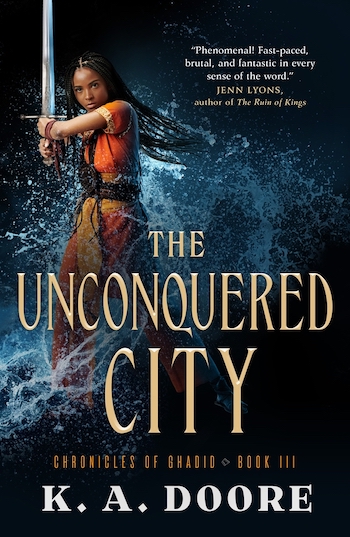

The Unconquered City
After I’d exhausted the dragon shelf, I devoured Ender’s Game and The Hobbit, along with numerous other fantasy and science-fiction books whose titles are lost to me, even as their stories and characters made an indelible dent. Either way, it was too late—fantasy had its hooks in me and the spec-fic section of the library stood no chance.
Almost 30 years later and now I have a child and a bookshelf of my own. While the child is still too young to start exploring our books, I’m already thinking about what I’ll put within easy reach. What books do I want to shape her early reading habits? Which books do I think will suck her in and—yes—guide her toward adoring fantasy as much as I?
Many have said we are living in a new golden age of fantasy and as I look around and consider what books I want on that shelf, I can’t help but agree. If anything, I don’t have the shelf space for every beautiful and thoughtful and groundbreaking and barrier-shattering and downright fantastic book I want to include.
But if I take a breath and breathe and remember that, if done right, my child will find the books she needs on her own, then it’s easier to pick a few. All I need are books that show her the best that fantasy can be: daring, adventurous, romantic, inclusive, optimistic, and limitless.
At the moment, these are the top five books or series I want to have on that shelf:
The Daevabad Trilogy by S.A. Chakraborty
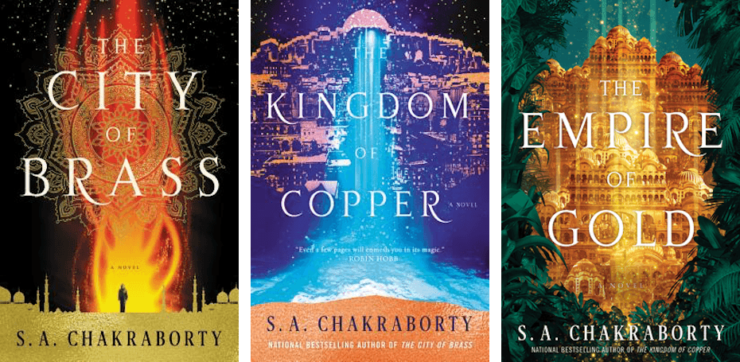
This trilogy is a one-stop series to find everything that’s wonderful in fantasy:
- an immersive and engaging story;
- complex and lovable characters who grow and change and learn;
- language that engages all the senses while still being accessible; and
- worldbuilding that feels natural and new while being grounded in mythos and history.
Chakraborty tackles real-world issues of racism and class and hate and the responsibility of power without a heavy hand, allowing the full complexity of these issues and their possible solutions to be thoroughly examined. It’s also a story that is non-stop adventure, with a thief turned reluctant princess, her murderous friend, and a prince turned reluctant revolutionary in a world of jinn, ghouls, ancient grudges, and magical cities.
AKA, the perfect gateway series for a potential lifelong genre fan.
This Is How You Lose the Time War by Amal El-Mohtar and Max Gladstone
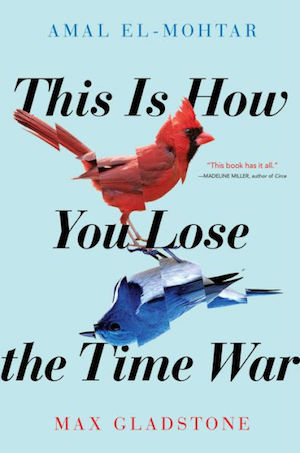
Where the Daevabad trilogy showcases the breadth and depth that fantasy can offer, this novella is a razor-fine slice of spec fic, a rich dark chocolate mousse meant for savoring after a long day. It’s a poem of a story, told by two rivals through their letters to each other across time and space and warzones, with decadent language and sparse worldbuilding focused purely on the relationship that is its blood and bones.
This is a novella that can spark a love for language, for mounting tension and fear and despair but, in the end—for hope. It’s a modern retelling of Romeo and Juliet, with all of the inter-house antagonism, the pursuit and anguish and pining, but with an optimistic twist at the end that showcases the very beating heart of science fiction.
Also, it’s gay.
The Unspoken Name by A.K. Larkwood
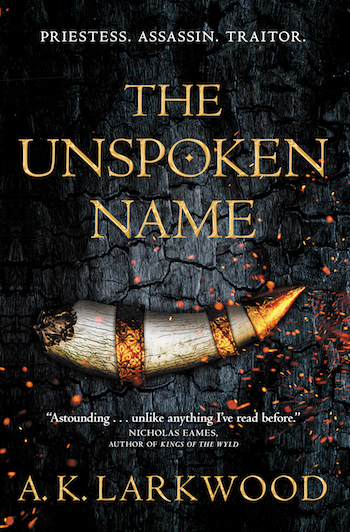
Another series that showcases the worldbuilding possibilities and imagination that fantasy does so very well, The Unspoken Name is fast and furious and breathtaking. Less political than the Daevabad trilogy, this book is more of a character examination writ large.
An orc priestess doomed to die for her god since birth is handed a possibility she never dreamed of: running away and living, despite and in spite. What follows is a story about owning your destiny and breaking free from the dogma that had fully defined your life to find that the world is so very much bigger than you could have ever dreamed.
AKA the perfect thing for someone reaching beyond the children’s section for the first time.
The soft sapphic romance at its heart definitely doesn’t hurt, either.
Boneshaker by Cherie Priest
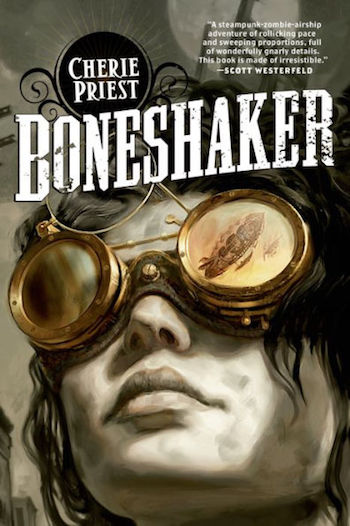
For a taste of what fantasy can do with history, this story about a mom trying to find and save her son from a 19th-century post goldrush Seattle that has been walled off due to a zombie plague is perfection. A beautiful blend of steampunk and horror that doesn’t try to whitewash the past, but instead embraces its complexities and diversity.
It’s a great way to learn about how a now-big city like Seattle started out—you know, before the whole zombie thing. Letting you explore and learn about our world through the lens of the fantastic is what fantasy does best, and Boneshaker is a great introduction.
With bonus: zombies.
The Wayward Children series by Seanan McGuire
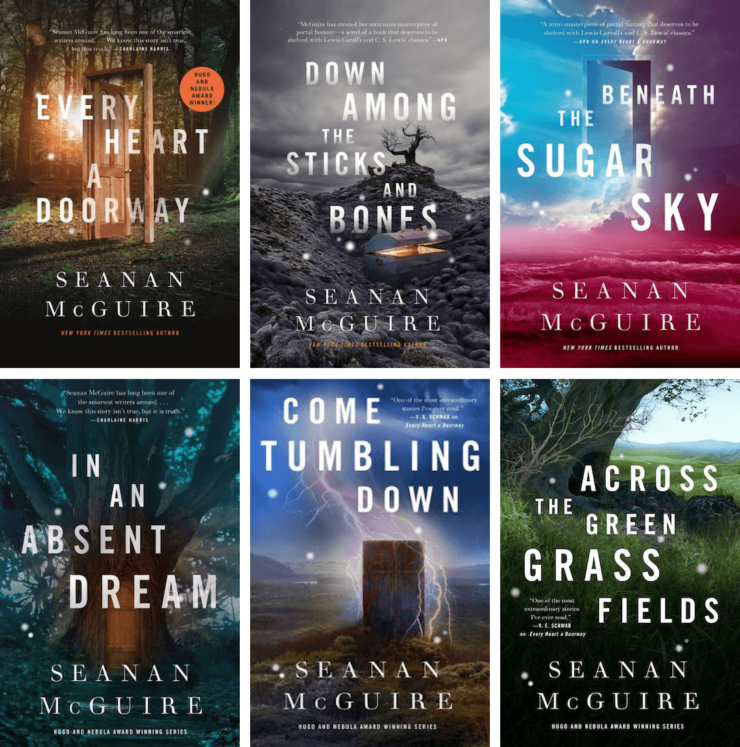
For every child forgotten or lost or unloved or simply in need of adventure, there is a door. Beyond that door, there is a world that is perfect just for them. But when that world is done with them—whether or not the child is done with the world—they are spat back into ours as if no time had passed.
The even books in the series tell us about those adventures, and the odd books tell us about what happens after. A spiritual successor to Narnia, but every bit as deep and engrossing, these novellas are short and quick and made for rereading. They are effortlessly inclusive and kind, sharing such a diversity of identities that I’m all but certain my child will find herself somewhere in those pages.
And if not? Then she can dream about a world of her own just on the other side of a door, and take her first steps into storytelling on her own.
Any one of these books or series would be a perfect gateway into discovering the joys and riches that fantasy can offer today. And if she doesn’t like any of these, there’s always the library.
What books would you have on your shelf?
K.A. Doore was born in Florida but has since lived in Washington, Arizona, and Germany. She has a BA in Classics and Foreign Languages and an enduring fascination with linguistics. These days she writes fantasy in mid-Michigan and develops online trainings for child welfare professionals. The Chronicles of Ghadid—The Perfect Assassin,The Impossible Contract, and The Unconquered City—are available from Tor Books.










